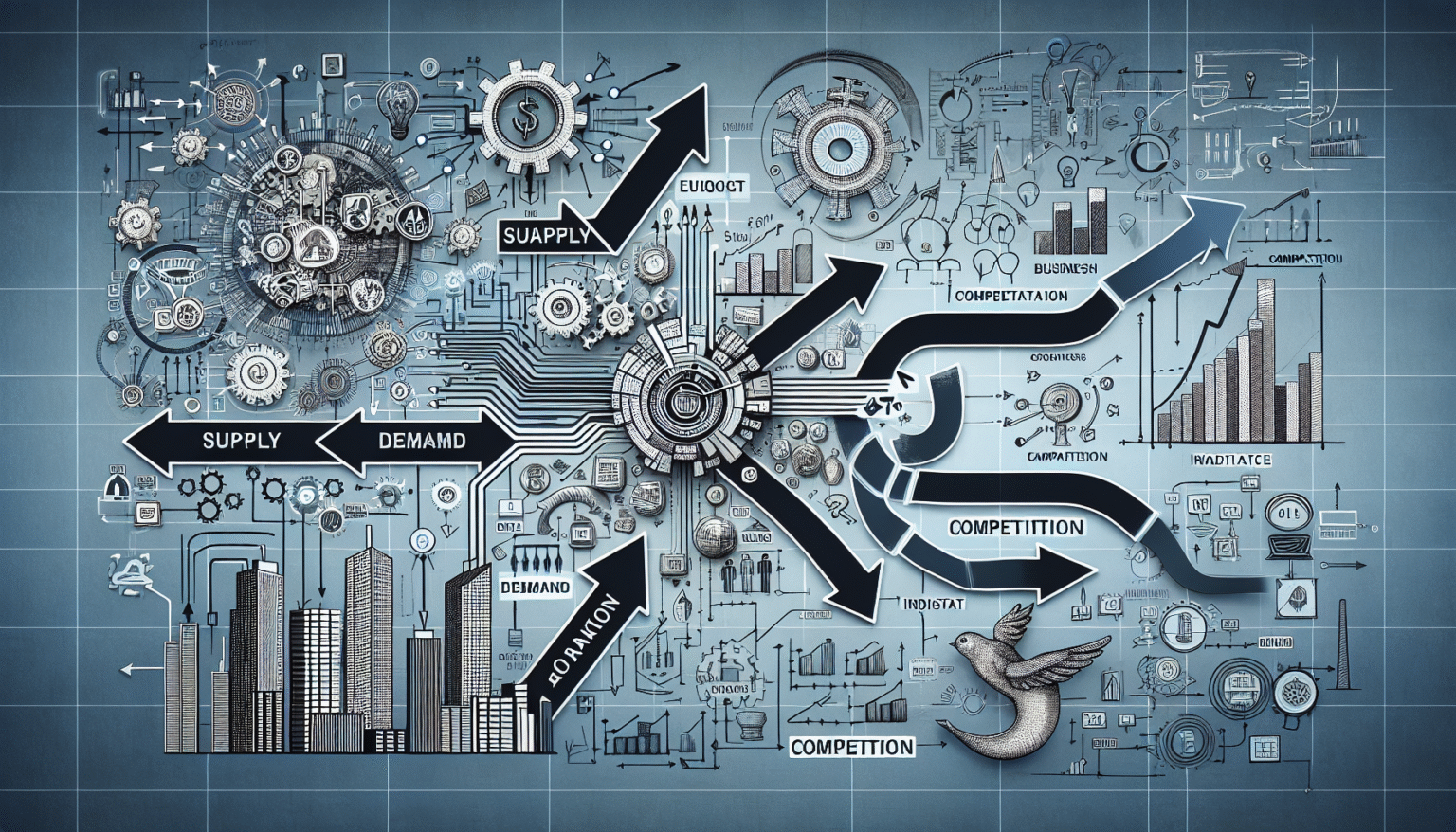Understanding Market Dynamics: How Businesses Adapt to Change
What are Market Dynamics?
Market dynamics refer to the forces that influence the supply and demand of goods and services within a market. These forces include economic indicators, consumer behavior, technological advancements, and competitive pressures. Understanding these dynamics is crucial for businesses looking to remain competitive.
Supply and Demand
Supply and demand are foundational concepts in market dynamics. Supply represents how much of a product or service is available, while demand reflects the consumer’s desire for that product. Changes in either can prompt businesses to adjust their strategies. For instance, if a sudden increase in demand occurs, businesses may prioritize ramping up production, hiring staff, or increasing inventory.
Economic Indicators
Businesses need to keep an eye on various economic indicators, such as GDP growth rates, inflation rates, and unemployment figures. These metrics give insights into the overall economic climate and help businesses forecast future trends. A healthy economy with low unemployment often increases consumer spending, prompting businesses to innovate and diversify their offerings.
Consumer Behavior Shifts
Understanding Consumer Psychology
Changes in consumer attitudes, preferences, and behaviors can have a profound impact on market dynamics. Digital transformation has changed the way consumers shop, pushing businesses to adopt more data-driven strategies. Companies analyze consumer behavior through tools like surveys, analytics, and social media listening.
Trend Analysis
Businesses often rely on trend analysis to predict shifts in consumer behavior. Staying ahead of trends allows them to tweak product offerings, improve customer service, and enhance marketing strategies. For example, if data shows a growing interest in sustainable products, a company might pivot toward eco-friendly practices and products.
Personalization
The modern consumer craves a personalized experience. With the advent of big data and artificial intelligence, businesses can now tailor their offerings to meet specific consumer needs. Personalization not only enhances customer satisfaction but also fosters loyalty, making it a crucial aspect of adapting to changing market dynamics.
Technological Advancements
Automation and Efficiency
Technological advancements have profoundly altered how businesses operate. Automation improves efficiency and reduces operational costs by streamlining processes. For example, manufacturing companies are increasingly employing robotics to handle repetitive tasks, allowing human workers to focus on more complex duties.
Innovations and New Products
Emerging technologies drive innovation, leading businesses to adapt their strategies. Companies that invest in research and development (R&D) can anticipate and create new products that better meet consumer expectations. Being at the forefront of innovation can significantly boost a brand’s reputation and market share.
Digital Transformation
In today’s digital world, businesses are compelled to adopt digital solutions. This includes e-commerce platforms, social media marketing, and customer relationship management (CRM) software. The shift to digital not only improves operational efficiency but also enhances customer engagement.
Competitive Pressures
Understanding Competition
Competitive dynamics can significantly impact a company’s strategy. Conducting thorough market research allows businesses to identify direct competitors and understand their strengths and weaknesses. This knowledge enables companies to differentiate themselves and find their niche within the marketplace.
Strategic Positioning
In a competitive environment, strategic positioning becomes crucial. Businesses must clearly define their unique selling proposition (USP) to attract customers. This may involve focusing on product quality, customer service, price competitiveness, or brand identity.
Collaboration and Partnerships
At times, competition can fuel the formation of strategic partnerships. Companies may collaborate with others to co-develop products, share technology, or enter new markets. This form of adaptation can help firms leverage each other’s strengths while minimizing risks.
Regulatory and Environmental Factors
Adapting to Regulations
Governments worldwide impose regulations that businesses must comply with. These regulations can pertain to labor laws, environmental standards, or consumer protection. Adapting to these changes often requires swift policy adjustments, re-training staff, or modifying product lines.
Sustainability as a Market Dynamic
In recent years, sustainability has emerged as a significant market dynamic. Consumers increasingly favor businesses that demonstrate environmental and social responsibility. This shift has led many organizations to integrate sustainable practices into their operations, thus enhancing their reputation and customer loyalty.
Global Market Influences
Navigating Globalization
Globalization has opened new markets for businesses but has also introduced intense competition. Firms must navigate varying regulations, consumer preferences, and economic conditions in different countries. Adaptability is crucial, as strategies that work in one region may not be effective elsewhere.
Economic Events
Unforeseen economic events, such as the COVID-19 pandemic, can drastically shift market dynamics. Businesses must remain agile and ready to reassess their models in response to such challenges. Those that successfully pivot during turbulent times often emerge stronger and more resilient.
Building an Adaptive Organization
Embracing Change
Organizations must cultivate a culture that embraces change. Encouraging innovation, responsiveness, and flexibility among employees ensures that businesses can adapt quickly to changing market conditions.
Leadership and Vision
Strong leadership is essential for steering a company through changes in market dynamics. Leaders must communicate a clear vision and motivate employees to align with new objectives. A strategic approach to change management can ease transitions and instill confidence across the organization.
Conclusion
The ability to adapt to changing market dynamics is fundamental for business sustainability and growth. By understanding the intricacies of supply and demand, consumer behavior, regulatory influences, and competitive challenges, businesses can strategically position themselves to thrive in an ever-evolving marketplace.






